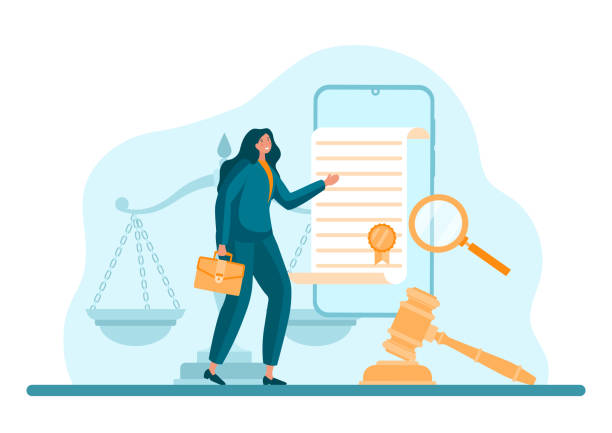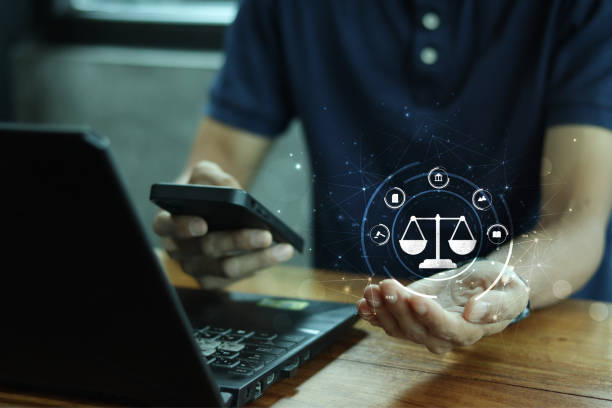Introduction
Patents serve as the bedrock of innovation, providing inventors with exclusive rights to their creations for a limited period. Behind this intricate web of intellectual property protection lies a crucial figure—the patent examiner. These individuals play a pivotal role in determining the fate of countless innovations by assessing their novelty, non-obviousness, and utility. As we delve into the intricacies of patent examination, we’ll explore the diverse landscape of patent systems worldwide and the unique challenges and responsibilities faced by patent examiners in different countries.

The Global Mosaic of Patent Systems
A. Overview of Patent Systems
In understanding the critical role of patent examiners in different countries, it is imperative to begin with an overview of the diverse patent systems that shape the intellectual property landscape globally. These systems serve as the foundation upon which patent examiners operate, each with its unique set of rules, procedures, and standards governing the protection of innovations. Here, we delve into the key aspects of various patent systems, shedding light on the fundamental principles that guide the evaluation and granting of patents.
Legal Framework and Statutory Requirements
Patent systems are deeply rooted in the legal frameworks of individual countries. The statutory requirements for obtaining a patent often include criteria such as novelty, non-obviousness, utility, and patentable subject matter.
The definition of what constitutes patentable subject matter can vary, influencing the types of inventions eligible for protection. For instance, some jurisdictions might exclude abstract ideas, natural phenomena, or mathematical formulas from patentability.
First-to-File vs. First-to-Invent
One of the foundational distinctions among patent systems lies in the determination of priority between competing inventors. Some countries, like the United States, operate on a first-to-invent principle, where the first person to conceive the invention is granted priority.
In contrast, many other countries, including those in Europe and Asia, follow a first-to-file system, granting priority to the first person to file a patent application for a particular invention. This system simplifies the determination of priority but can lead to strategic challenges for inventors.
Patent Cooperation Treaty (PCT) and International Collaboration
The Patent Cooperation Treaty (PCT) is a crucial international agreement that facilitates the filing of patent applications across multiple jurisdictions. It streamlines the process by allowing inventors to file a single international application, which can then be pursued in various member countries.
International collaboration, as exemplified by the PCT, aims to harmonize patent procedures and standards, reducing the complexities associated with obtaining global patent protection. The PCT also provides a framework for sharing search and examination results among participating patent offices.
Examination Procedures and Documentation
The specific procedures followed during patent examination can vary widely among different patent offices. The documentation required, the format of patent applications, and the sequence of examination steps may differ based on jurisdictional practices.
Some patent offices, such as the European Patent Office (EPO), conduct a comprehensive examination that includes a detailed review of the patent application’s technical content. Others, like the United States Patent and Trademark Office (USPTO), involve a rigorous prior art search and a focused examination process.
Standard of Patentability
The threshold for patentability, particularly in terms of non-obviousness and inventive step, can differ significantly among patent systems. The evaluation of prior art, the determination of obviousness, and the consideration of the inventive contribution vary based on legal and procedural nuances.
While some jurisdictions emphasize a more stringent approach to non-obviousness, others may adopt a more flexible standard, recognizing incremental innovations as patent-worthy.
Duration and Maintenance of Patents
The duration of patent protection varies globally, with most countries providing protection for a set period, typically 20 years from the filing date. However, some jurisdictions may offer extensions or adjustments under specific circumstances.
The maintenance requirements for patents, including the payment of maintenance fees, also differ among countries. Failure to meet these requirements can result in the expiration of the patent.
Appeal and Review Processes
Patent systems include mechanisms for applicants to challenge adverse decisions through appeal and review processes. The structure of these processes, the availability of appeals, and the criteria for review can vary, influencing the avenues for applicants to contest examiner decisions.
B. Harmonization Efforts
Despite the differences, international efforts have been underway to harmonize patent systems and streamline the application process. Initiatives like the Patent Cooperation Treaty (PCT) and the Agreement on Trade-Related Aspects of Intellectual Property Rights (TRIPS) aim to create a more cohesive global patent framework, easing the burden on patent examiners dealing with international applications.
The Patent Examination Process
The patent examination process is a comprehensive and intricate procedure through which patent offices assess the patentability of inventions. Led by patent examiners, this process involves several stages, from the initial filing of a patent application to the ultimate determination of whether the invention meets the criteria for patent protection. Let’s explore each phase of the patent examination process:
1. Filing of the Patent Application
Submission of Application: The process begins when an inventor or an entity submits a patent application to the relevant patent office. The application typically includes a detailed description of the invention, claims defining the scope of protection sought, and any necessary drawings or diagrams.
Formal Examination: Initially, the patent office conducts a formal examination to ensure that the application meets basic requirements, such as proper documentation and adherence to prescribed formats.
2. Prior Art Search
Conducting a Search: One of the key roles of a patent examiner is to perform a prior art search. This involves looking for existing documents, including prior patents, scientific publications, and other literature, to determine the novelty and non-obviousness of the invention.
Search Report: The results of the prior art search are compiled into a search report, which provides the applicant with a list of documents that may be relevant to the patentability of the invention.
3. Substantive Examination
Evaluation of Novelty and Non-Obviousness: The substantive examination phase involves a detailed evaluation of the patent application’s claims and the prior art. Examiners assess whether the invention is novel, non-obvious, and meets other statutory requirements.
Office Actions: If the examiner identifies issues with the application, they issue an office action outlining objections, rejections, or requests for additional information. The applicant has an opportunity to respond to these office actions.
4. Amendments and Responses
Applicant’s Response: Based on the examiner’s feedback, the applicant can submit amendments to the claims, arguments, or additional evidence to address any objections or rejections raised in the office action.
Iteration: The examination process often involves multiple iterations of office actions and applicant responses. This back-and-forth communication allows the examiner and the applicant to refine the claims and clarify any issues.
5. Allowance or Final Rejection
Grant of Patent or Final Rejection: If the patent examiner is satisfied with the responses and amendments made by the applicant, they issue a notice of allowance, indicating that the patent will be granted. Conversely, if issues persist and are not adequately addressed, the examiner may issue a final rejection.
6. Appeals and Post-Examination Proceedings
Appeals Process: If the applicant disagrees with a final rejection, they can appeal the decision to a higher authority within the patent office or, in some cases, to an external administrative tribunal.
Post-Examination Proceedings: Some patent offices provide procedures for post-examination proceedings, such as reexamination or opposition, allowing third parties to challenge the validity of granted patents.
7. Grant and Maintenance
Grant of Patent: Upon successful completion of the examination process, the patent office grants the patent. The inventor or assignee then has exclusive rights to the invention for a specified period, typically 20 years from the filing date.
Maintenance Requirements: To keep the patent in force, the patentee must fulfill maintenance requirements, which often include the payment of maintenance fees at regular intervals.
8. Publication and Public Accessibility
Publication of Patent Application: Patent applications are usually published after a certain period, providing the public with information about the invention and its scope.
Public Accessibility: The patent system aims to strike a balance between protecting inventors’ rights and fostering innovation by making patent information publicly accessible.
9. Post-Grant Proceedings
Post-Grant Challenges: After the grant of a patent, third parties may challenge its validity through post-grant proceedings, such as inter partes review or opposition proceedings, depending on the jurisdiction.
10. International Considerations
PCT and International Applications: For international applications, the Patent Cooperation Treaty (PCT) provides a framework for filing a single application that can be pursued in multiple countries. International collaboration and coordination play a crucial role in harmonizing the patent examination process globally.

Role of Patent Examiners in Different Countries
A. United States Patent and Trademark Office (USPTO)
The USPTO, one of the largest patent offices globally, faces the challenge of handling a vast number of applications annually. Patent examiners at the USPTO undergo rigorous training and are often specialists in their respective fields. The emphasis on quality and efficiency is evident in programs such as the Track One prioritized examination, which expedites the review process for qualifying applications.
B. European Patent Office (EPO)
The EPO operates on a regional basis, covering multiple European countries. Patent examiners at the EPO are required to have proficiency in at least three languages, reflecting the multilingual nature of the region. The EPO’s approach to examination involves a collaborative effort, with examiners from different countries contributing their expertise to ensure a comprehensive evaluation.
C. State Intellectual Property Office of China (SIPO)
As China emerges as a global innovation powerhouse, the role of patent examiners at the SIPO becomes increasingly significant. Chinese patent examiners focus not only on assessing the technical aspects of inventions but also on promoting domestic innovation. The evolving nature of China’s patent system reflects the country’s commitment to fostering indigenous technological advancements.
D. Japan Patent Office (JPO)
In Japan, patent examiners play a crucial role in maintaining a delicate balance between encouraging innovation and protecting public interest. The JPO places a strong emphasis on precision and clarity in patent applications, reflecting the meticulous nature of Japanese technological advancements. The examination process in Japan is characterized by a commitment to thoroughness and a focus on ensuring that granted patents contribute meaningfully to the progress of science and technology.
Challenges Faced by Patent Examiners
A. Technological Complexity
Advancements in technology have led to increasingly complex inventions, posing challenges for patent examiners. Keeping abreast of developments in fields such as artificial intelligence, biotechnology, and nanotechnology requires continuous training and adaptation. Patent offices worldwide are investing in programs to equip examiners with the knowledge and tools necessary to navigate the evolving technological landscape.
B. Backlog and Workload
The sheer volume of patent applications presents a significant challenge for patent offices globally. Backlogs can lead to delays in the examination process, affecting the timely protection of inventions. Efforts to address this issue include hiring additional examiners, implementing streamlined procedures, and leveraging technology to automate certain aspects of the examination process.
C. Subjectivity in Evaluation
Determining the non-obviousness of an invention, a key criterion for patentability, often involves a degree of subjectivity. Patent examiners must strike a balance between promoting innovation and preventing the grant of overly broad or trivial patents. Ongoing discussions within the global intellectual property community aim to refine standards and provide clearer guidance to examiners, reducing the potential for subjective interpretation.
D. Globalization and Diverse Legal Standards
Patent examiners must navigate a globalized landscape with diverse legal standards, procedures, and practices. Variances in patent laws and standards across jurisdictions can complicate the examination process for international applications.
E. Emerging Technologies and Ethical Considerations
The emergence of cutting-edge technologies, such as gene editing and artificial intelligence, poses novel challenges related to ethical considerations and societal impacts. Patent examiners must navigate evolving ethical standards and public perceptions.
The Future of Patent Examination
A. Technological Integration
The future of patent examination lies in the seamless integration of technology into the process. Artificial intelligence tools, machine learning algorithms, and big data analytics hold the potential to revolutionize prior art searches, enhance the efficiency of examination procedures, and contribute to more accurate decision-making.
B. International Collaboration
Continued efforts toward international collaboration and harmonization will shape the future of patent examination. Streamlining procedures, adopting common standards, and facilitating the exchange of best practices will contribute to a more efficient and equitable global patent system.
C. Evolving Legal and Ethical Considerations
As technology advances, legal and ethical considerations surrounding patents evolve. Patent examiners will play a crucial role in navigating the ethical implications of emerging technologies, such as gene editing, artificial intelligence, and biotechnology. Striking a balance between encouraging innovation and safeguarding societal interests will require ongoing dialogue and adaptation.
Conclusion
The role of patent examiners is indispensable in fostering innovation, protecting intellectual property, and shaping the future of technology. As we navigate the intricacies of different patent systems worldwide, it becomes evident that the challenges faced by patent examiners are as diverse as the innovations they evaluate. By addressing these challenges, embracing technological advancements, and fostering international collaboration, patent offices can ensure a robust and responsive system that nurtures innovation for generations to come.

